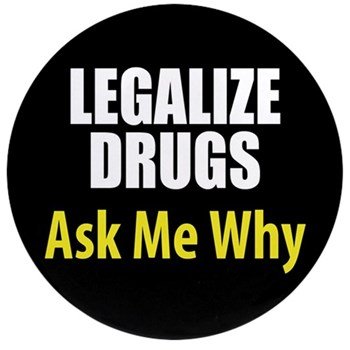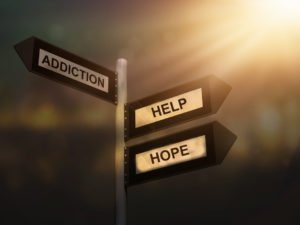Full Legalization Can Hit Biggest Targets: Dealing with the Opioid Epidemic

Full Legalization Can Hit Biggest Targets: Dealing with the Opioid Epidemic
A man is brought to the emergency room. His friends go inside to get the help of those on staff, now that he had overdosed. Scared and unsure of what to do, his friends begin screaming that he has OD’d as they were running in the ER doors. He had passed out within 5 minutes of injecting the pain killing street drug in the back seat of the car while outside a Walmart. It is clear to a great many people that there is an epidemic of cases just like that. People are dying at an alarming rate. In fact, according to Meilan Solly of Smithsonian.com, the United States of America’s life expectancy has dropped over the last three years in great part as a result of overdoses from heroin and opioid based medication (Solly, 2018). We’re going to go over a drastic but brief explanation of one of the many things that can be done to address this issue – full legalization of drugs.
The scope of the epidemic is much larger than will be addressed in this paper so we’re going to focus on the legalization of the heroin specifically with what has worked around the world, ideas that have successfully been implemented and those on the cusp of implementation along with the hope and projected outcome of these various projects and policies.

Let’s start by traveling down to Latin America where according to Alfonso Serrano of Time Magazine discusses “How Latin America May Lead the World in Decriminalizing Drug Use” (Serrano, 2012). In Latin America Drugs are a major producer of power, money, and addicts. Virtually every country down there is beginning to address the problem in various ways, but according to Serrano ”…no country has proposed more drastic reform than Uruguay. President José Mujica’s center-left Broad Front party introduced a measure this summer that would not only legalize marijuana consumption but also place the government at the helm of production and distribution. The bill, which would allow citizens to purchase up to 40 g of cannabis per month, materialized as the tiny nation of 3.5 million inhabitants scrambles to battle drug-related violence” (Serrano, 2012).
Next, we’ll travel over to the Atlantic Ocean into the super white country Switzerland. The Swiss, according to the Associated Press, have implemented “the heroin program, started in 1994, is offered in 23 centers across Switzerland. It has helped eliminate scenes of large groups of drug users shooting up openly in parks that marred Swiss cities in the 1980s and 1990s and is credited with reducing crime and improving the health and daily lives of addicts.” They have taken a leading role in Europe in fighting this issue within their borders and many other countries are following suit. In fact, “The Netherlands started a smaller program in 2006, and it serves nearly 600 patients. Britain has allowed individual doctors to prescribe heroin since the 1920s, but it has been running trials similar to the Swiss approach in recent years. Belgium, Germany, Spain and Canada have been running trial programs too” (Swiss Approve Pioneering Legal Heroin Program, 2008) . Opponents like the U.S. and the U.N. criticize these programs as fueling drug abuse but lack the evidence to substantiate such claims.
 )
)
And we’ll bring it back to America where Canada has as recently as 2016 allowed for doctors to prescribe lab produced heroin according to an article in Zero Hedge. “In order to respond to what Canadian officials see as a growing threat, Health Canada launched new proposals in May to ‘allow doctors to prescribe heroin to some opioid addicts who do not respond to treatments such as methadone’” (SRSrocco, 2016). This trend seems to be on the upward spiral for the rest of the world as well. In the United States, they already have medically assisted treatment for opioid addiction in the form of Methadone, along with clinics dedicated to treating addicts with the substitute. The reality that opioid addicts live most of their days just trying to not be sick, in spite of the health risks, it can be said that if they don’t have to worry about getting the drugs then they can live a relatively normal life, something sustainable.
Unfortunately for us in the United States, Richard Nixon’s racist policy and public relations frenzy that established the War on Drugs -to whom drugs seem to winning- makes it very difficult for people to look on these poor souls with compassion. The public demonizes those who now suffer with the mental disease of substance use disorder, places them in the under caste of felons, and wishes only for them to die. We do seem to be taking a slightly different approach as the numbers mount with treatment court programs that have been established. As T.D. Rucker, a treatment court graduate mentions, “The drug court system is a prime alternative to simply locking people up. I personally couldn’t have asked for a better opportunity. The drug court program has its limits and short comings, such as being run by the ever so fallible human beings and financed through grants and payments of the participants. The number of services utilized are drastically less than the number that are needed. The people who participate in the program must have one thing…A desire for a different life than the one they had while in the streets feeding their active addiction “ (Rucker, 2017).
From Latin America, Europe, and back to America everyone seems to be in agreement, you have to fight fire with fire and there is no easy way out. However, creating criminals isn’t very conducive to a better society and if we really put the compassion for mankind behind our deeds then maybe that friend wouldn’t have lost his life trying to get himself out of pain, but would have had the help he really needed.
Works Cited
Robert R. Redfield, M. (2018, 11 29). CDC Director’s Media Statement on U.S. Life Expectancy. Retrieved from https://www.cdc.gov/media/releases/2018/s1129-US-life-expectancy.html
Rucker, T. (2017, 2 17). Drug Court. Retrieved from Living Criminal: http://tdrucker.blogspot.com/2017/02/drug-court.html
Serrano, A. (2012, 10 9). How Latin America May Lead the World in Decriminalizing Drug Use. Time.
Solly, M. (2018, 12 3). U.S. Life Expectancy Drops for Third Year in a Row, Reflecting Rising Drug Overdoses, Suicides. Retrieved from Smithsonian.com: https://www.smithsonianmag.com/smart-news/us-life-expectancy-drops-third-year-row-reflecting-rising-drug-overdose-suicide-rates-180970942/
SRSrocco. (2016, 9 17). Canada Just Legalized Heroin For Medical Use. Retrieved from Zero Hedge: https://www.zerohedge.com/news/2016-09-17/canada-just-legalized-heroin-medical-use
Swiss Approve Pioneering Legal Heroin Program. (2008, 11 30). Retrieved from http://www.nbcnews.com/id/27987734/ns/world_news-europe/t/swiss-approve-pioneering-legal-heroin-program/